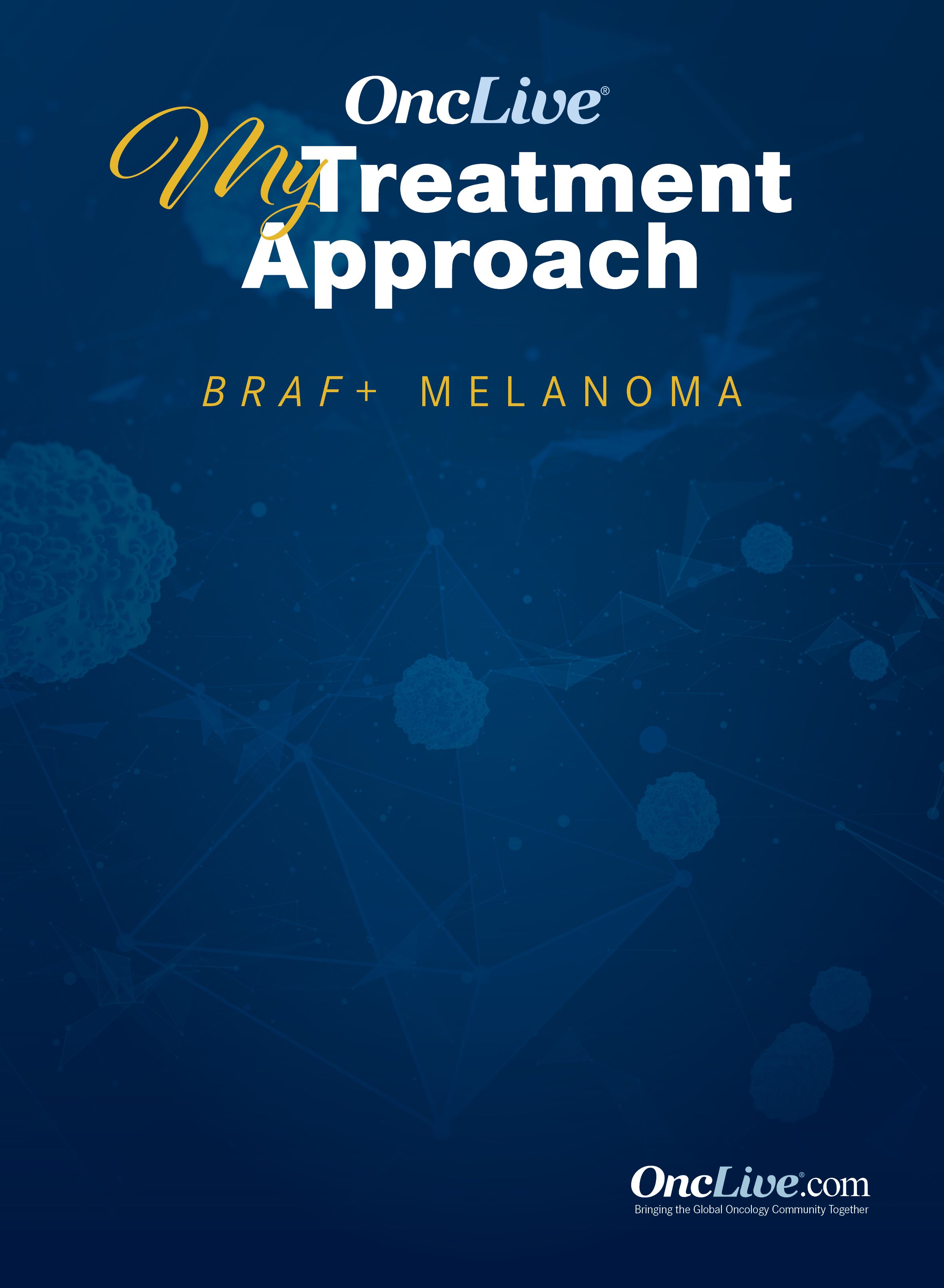Publication
Article
Supplements and Featured Publications
Deciding Between Adjuvant Targeted Therapy and Immunotherapy in BRAF+ Melanoma
Author(s):
Reinhard Dummer, MD, shares his approach for selecting between targeted approaches and immunotherapy agents in the adjuvant treatment of patients with melanoma.
Reinhard Dummer, MD

When selecting between an adjuvant targeted therapy or immunotherapy for a patient with melanoma, it’s important to consider several factors, including the biologic behavior of the tumor, any comorbidities, toxicities, and patient concerns, according to Reinhard Dummer, MD.
Promising long-term data with targeted approaches have indicated that this class of agents improves progression-free survival (PFS) and distant metastases-free survival (MFS), according to Dummer. However, this approach is not without toxicities. Several patients experience grade 3 adverse effects (AEs), such as pyrexia, which could lead to treatment discontinuation. Notably, however, many of these toxicities will resolve once the treatment is stopped.
Although immunotherapies have been shown to have less grade 3 or 4 toxicities, some of the effects experienced with this approach may become a lifelong burden. Additionally, because these agents require patients to come into the clinic for treatment, safety challenges are presented in light of the coronavirus disease 2019 (COVID-19) pandemic, noted Dummer.
“Generally, AEs are rare [with this approach], but there is a class of AEs that do not resolve. [One] example [of this are the], endocrine toxicities like a reduction of [thyroid] hormone production,” said Dummer. “[Younger patients] are concerned that they will require lifelong medications [due to some of these effects]. I mentioned thyroid hormones, which is very common; however, in rare cases, this can also affect insulin production, so that would mean a young patient would experience lifelong diabetes. This is a very serious medical concern.”
In an interview with OncLive® Dummer, a professor at the University Hospital Zurich and vice-chairman of the Department of Dermatology in the University Hospital of Zürich, Switzerland, shared his approach for selecting between targeted approaches and immunotherapy agents in the adjuvant treatment of patients with melanoma.
OncLive®: Could you spotlight recent shifts in melanoma treatment?
Dummer: Melanoma is a very exciting malignancy; it’s a paradigm for modern treatment developments. Standard approaches, such as chemotherapy or radiation, do not play a role anymore in the treatment of [patients with] advanced disease. We have 2 main developments [that have changed care]: immunotherapy and targeted therapy. Also, in all areas, we are now positioned to use combination therapies. We have a clear indication that in the field of targeted therapy, a combination of a BRAF inhibitor and a MEK inhibitor is, by far, more efficient than monotherapies.
We have similar data [supporting the use of] immunotherapies. Here, we have anti–PD-1 monotherapies as a backbone, but findings suggest that a combination of an anti–PD-1 inhibitor with ipilimumab [Yervoy] shows more benefit. This is definitely true for patients who have high-risk disease—for example, those with brain metastases, those who are younger, or those with negative prognostic indicators like elevated lactate dehydrogenase. In these patients, the combination of ipilimumab and nivolumab [Opdivo], an anti–CTLA-4 [inhibitor] and an anti–PD-L1 antibody, make a lot of sense.
Adjuvant approaches have since emerged. How do you determine which patients will benefit the most from this kind of approach?
The patient population that qualifies for adjuvant therapy is larger than [those who are treated] in palliative settings. In our department, I would assume [that many of] the patients who receive systemic therapy are in the adjuvant setting. This is a huge change in melanoma treatment.
Melanoma is a paradigm [that utilizes] modern medications, especially combination targeted therapy and anti–PD-1 monotherapy; these are very well-tolerated treatment options. It is justified to use these medications in patients who have a high risk to develop new metastases. This implies that we are also treating a substantial proportion of patients who do not develop metastases. We are [also] treating patients who are healthy.
We unfortunately do not know who these patients are because even low toxicity should be avoided if you can. It's very important that we invest in the identification of biomarkers that can predict the outcomes of disease to identify the patients who will really profit from adjuvant treatment options.
What does your process look like for selecting between BRAF/MEK targeted therapy and immunotherapy in the adjuvant setting?
The first essential point is the presence of a BRAF mutation. In the adjuvant setting, the BRAF mutation is not always evaluable because sometimes the material of the tumors is resected in private practices. [In this case,] it might be difficult to assess the primary tumor. Some of these patients only have very small deposits of tumors in the lymph node, which, for example, during the sentinel node procedure, is completely worked up. In this situation, it might be difficult to have enough material [to effectively assess] molecular biology. One possibility that can be helpful is the use monoclonal antibodies that are specific for the BRAF V600E mutation. This can be substituted in some situations for a molecular analysis.
We then have to understand the benefit and risks of adjuvant therapy. If we focus on the benefits first for adjuvant targeted therapy, we have the longest follow-up time here, with 5-year data. The [findings we have seen] are very encouraging. We [see] a risk reduction in the range of 45% and 50% in terms of PFS and distant MFS. Based on the experience that we have, we can assume that this [benefit] will translate into improved overall survival. If you have a close look at the toxicities, we realize that a substantial proportion of patients have grade 3 AEs which usually include pyrexia; this can cause a lot of discomfort. However, these AEs are clearly related to drug exposure; therefore, if we discontinue the medications, they will disappear. All toxicities with targeted therapy completely resolve, so this is a very encouraging sign.
For immunotherapy, we have less acute grade 3/4 AEs; I would say overall, that the therapy is well tolerated. One of the disadvantages [with this approach] is that these therapies are [delivered via] infusions, so this means the patients have to visit an outpatient clinic regularly. Especially nowadays, with all the concerns over [exposure to the] COVID-19, this is a disadvantage. Mostly, AEs are rare [with this approach], but some of them do not resolve.
We talk about all these advantages and disadvantages when we suggest therapies; this is especially true nowadays, when we see medical issues associated with COVID-19 and as [more] information on the risk of diabetes and, in rare indications, cardiomyocytes during immunotherapy [emerges]. More often, younger patients decide to go for a targeted therapy because of these [reasons].










